By Ken Lain, the mountain gardener
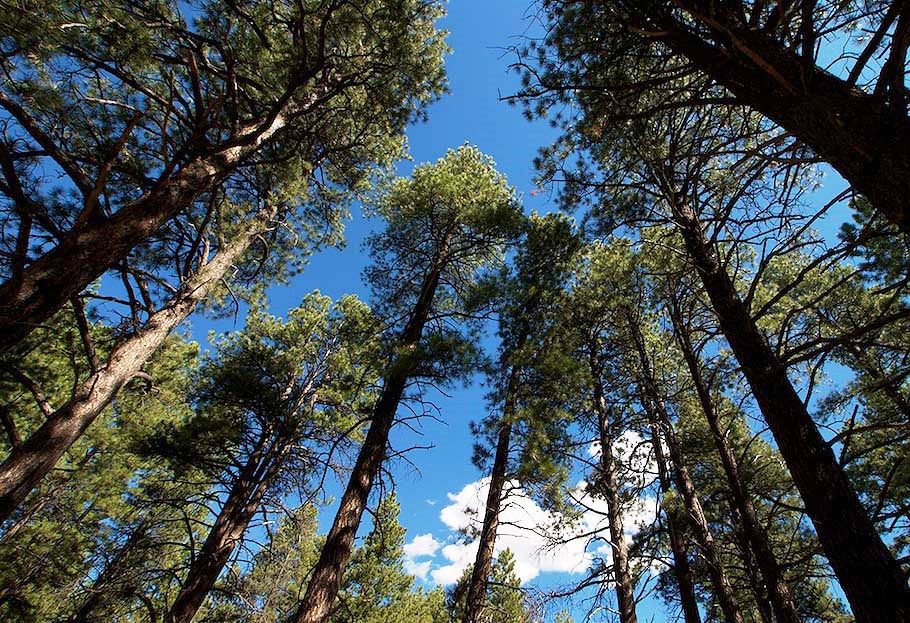
If you live in a neighborhood where ponderosa pines grow freely, you know about too many pine needles. Pine trees drop lots of needles, especially those 50-foot giants! Gutter guards protect rain gutters, but piles of needles are on the ground. What is to be done with all these needles?
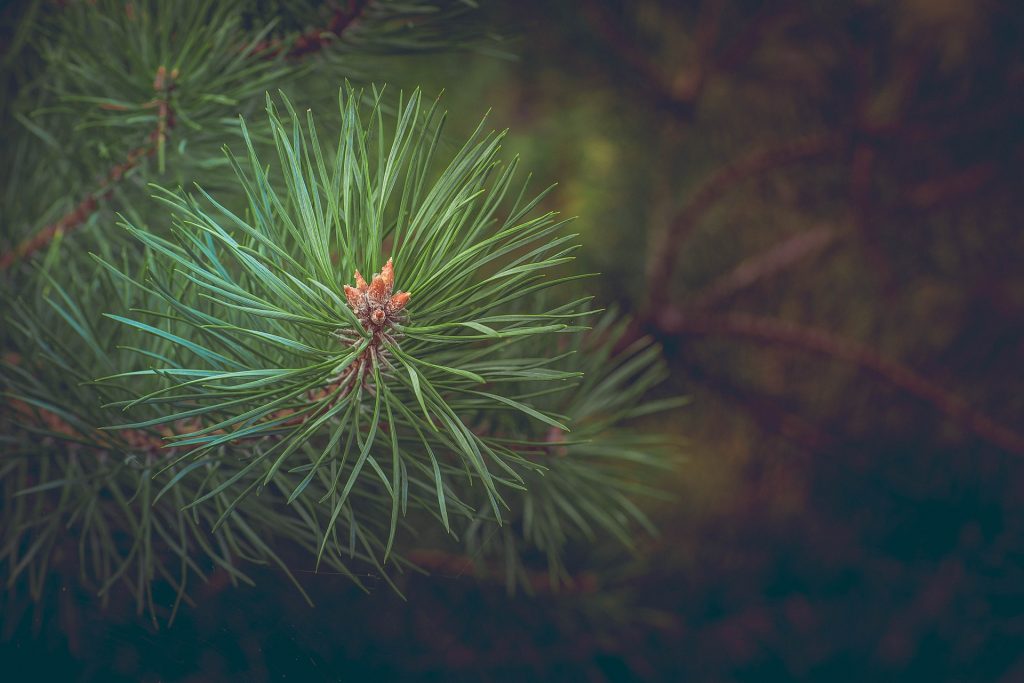
Condensed Version of this Article – Readers Digest version
- A 4″ inch layer of Pine Needles is best used to top-dress flower gardens and firewise plants like roses, lilacs, rhododendrons, azaleas, and maple trees.
- Shake and toss pine straw the way you would regular straw, so it forms a 4″ fluffy layer.
- A 2″ layer of pine straw settles down to form a 1″ mulch cover.
- Pine trees need some needles at their bases to protect their moisture and bark beetle infestation.
- In wildfire-prone gardens, using a 4″ layer of Watters Premium Mulch is safer from fire.
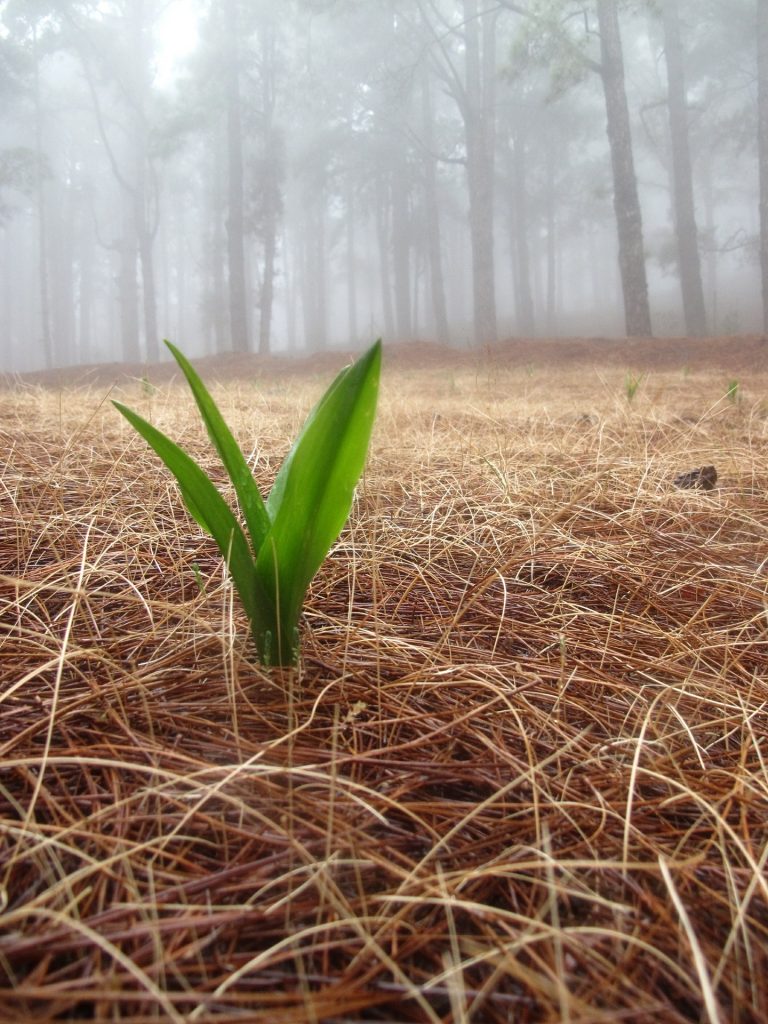
For years we’ve heard that pine needles should be used only around acid-loving plants. Since the needles themselves lean toward being acidic, it would seem to make sense that they acidify their surroundings. Right? Not true. Pine needles do not acidify garden soils.
Many things, such as climate, rainfall, irrigation water, and the soil itself, influence soil pH. However, top dressing or mulched materials break down so slowly they hardly make a difference to a soil’s pH. Pine needle mulch’s acidity remains at the soil’s surface and does not alter the soil around plant roots.
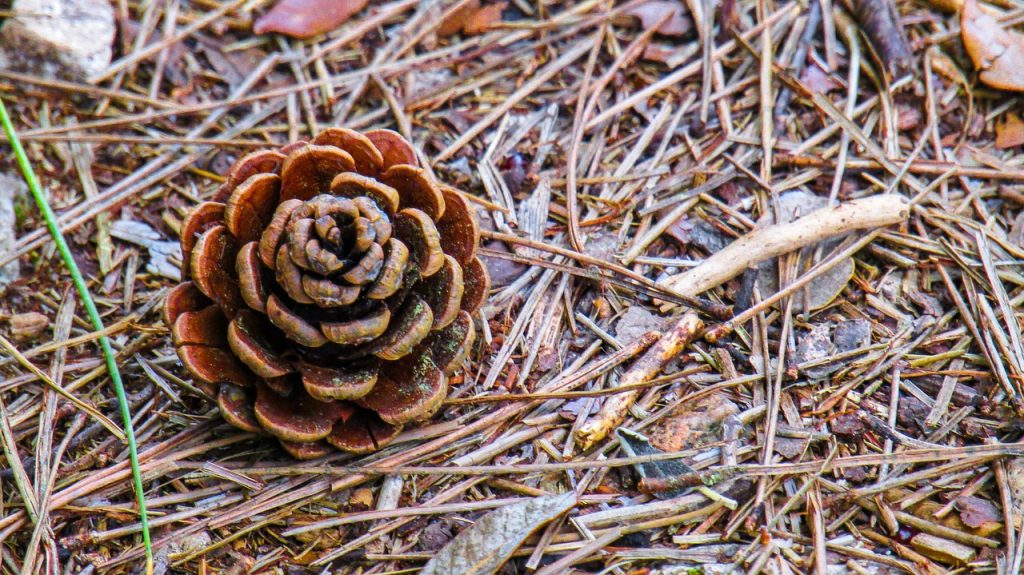
Are Pine Needles a Good Choice for Mulching?
Pine needles are the right choice for mulching and really economical if you have pine trees in the yard or pine straw readily available. Because pine needles break down slowly, they are not useful additives to turn directly into garden soils. Best to use them as a top dressing on flower gardens, around roses, and places where weed and moisture control are desired.
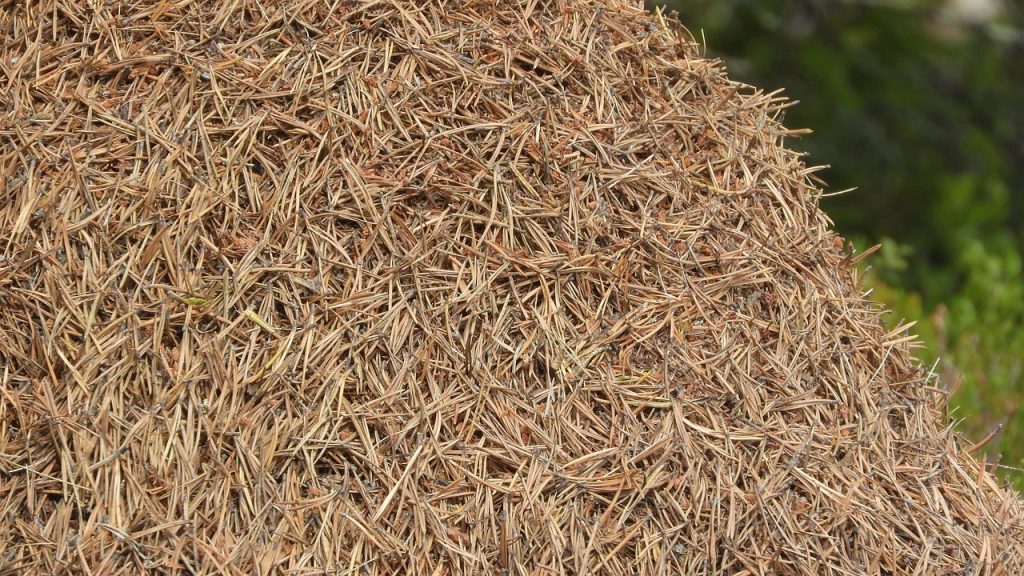
What is Pine Straw?
Pine straw is the name given to pine needles when they are used as top dressing mulch. Despite our local concentration of pine forests, rarely is pine straw offered for sale. But if you can get your hands on some, whether a commercial product or your neighbor’s surplus, pine straw makes excellent and inexpensive mulch.
Benefits of Pine straw
- Needles are lightweight. Not only are they easy on a gardener’s backs, but they also don’t compact soils.
- Pine needles rarely bring weed seed with them. Also, they block sunlight from reaching the seeds that are already in the soil, preventing them from germinating.
- Pine needles decompose very slowly so that they don’t need replacing as often as other mulches. Over time needles will breakdown and enrich garden soil.
- They moderate soil temperature in summer and prevent winter soils from freezing and heaving roots from the ground.
- Once pine needles settle, very few float away in heavy rain. They form a loose mat and stay put.
- Pine straw is often recommended for slopes and hillsides. They allow irrigation and light rains to get through to the soil, rather than washing to the bottom of the slope and carrying away precious topsoil.
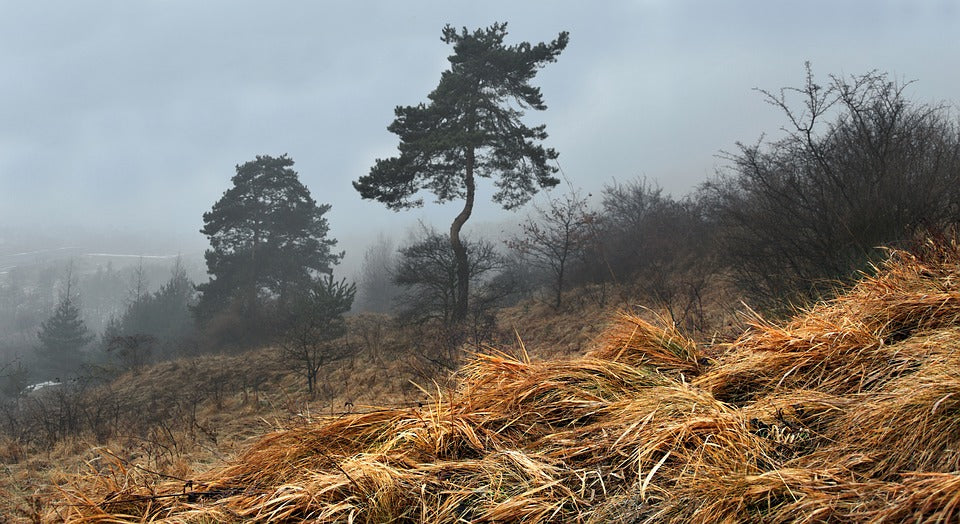
Negatives of too many Pine Needles
- We all know that nothing is perfect, including pine straw mulch. I’ve already mentioned that availability can be a problem. When you find pine straw, be aware it can be blown around in windy locations until a new layer of needles has settled.
- If it does not cover the soil fully, you will still have some weeds, and weeding in pine straw is not particularly pleasant. It may look light and fluffy, but those needles are
sharp!
- Pine straw is flammable. If you are in the Wildfire Interface, composted mulch or cedar bark products are better, safer choices.
- Using too much is a bad thing. Pines use their needles to smother out all competitors within their root zones. So, more than a 4″ inch layer of needles creates an interlocking turtle shell effect that sheds water away from your plants. A 2-4″ inch layer is ideal.
- No Matter their drawbacks, I collect and use pine needles for my gardens.
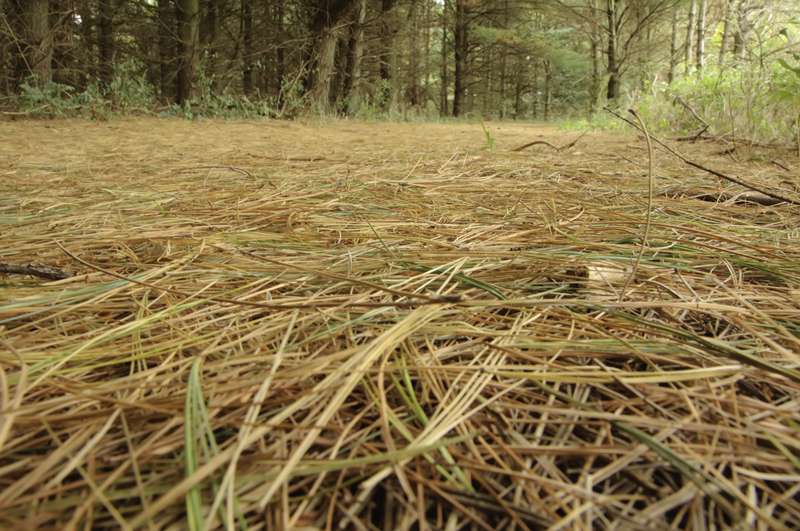
Cleanup Recommendations
If you already have native pines and junipers on your property, you know how thick the needles’ layers can be. To reduce wildfire risk, rake up the light, fluffy layer of needles, but leave a 2-4″ layer around the trees’ drip lines. This will ensure your trees remain moist while reducing native weeds and infestations of bark beetles.
Pine trees need some needles at their bases to protect their health. Give the rest away to friends and fellow gardeners in the neighborhood.
Recommendation – If you are fearful of wildfires and just can’t leave an insulating layer of needles behind after cleanup, try using a 2-4″ layer of shredded cedar bark or Watters Premium Mulch instead. Composted material and bark products don’t burn as quickly as pine straw. Use collected pine needles around fire-resistant plants like roses, lilacs, rhododendrons, azaleas, and maple trees.
Protect your Pine Trees – Drought has put pine trees at a high risk this winter. After the needle cleanup, feed your trees with 7-4-4 All Purpose Plant Food and inoculate them from bark beetle with Watters Plant Protect for continued health.
Until next week, I’ll be helping gardeners mulch their gardens here at Watters Garden Center.
Ken Lain can be found throughout the week at Watters Garden Center, 1815 W. Iron Springs Rd in Prescott, or contacted through his web site at WattersGardenCenter.com or FB.com/WattersGardenCenter

